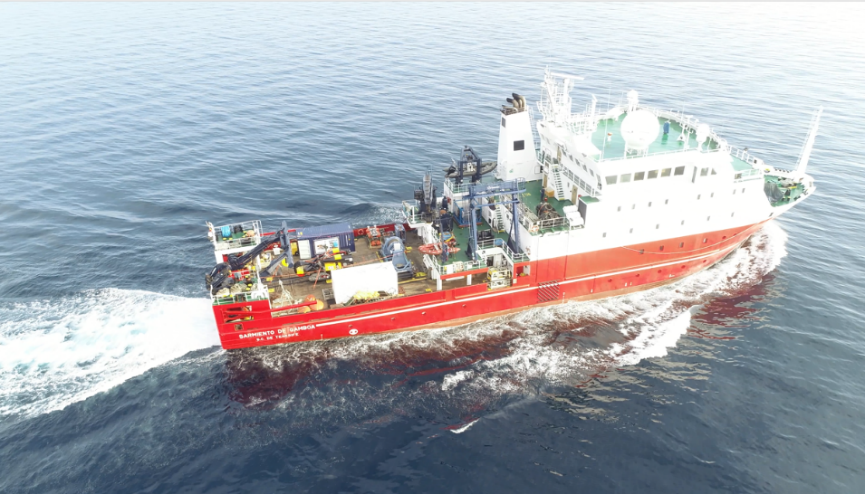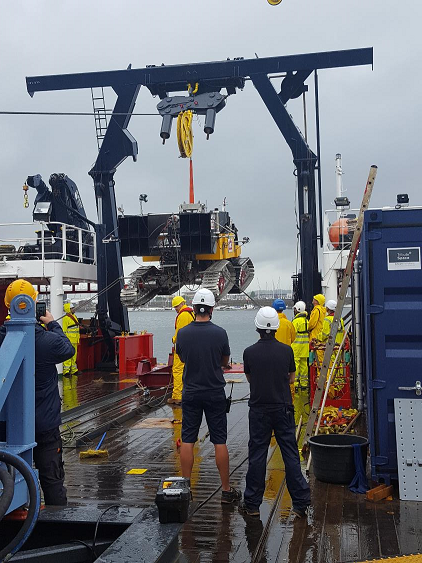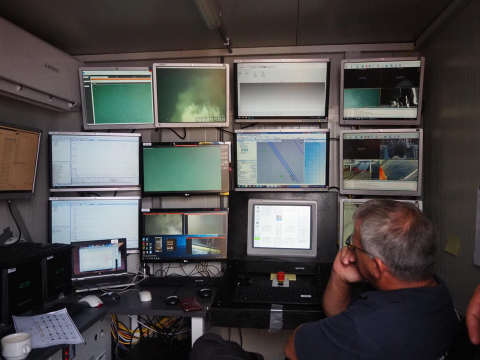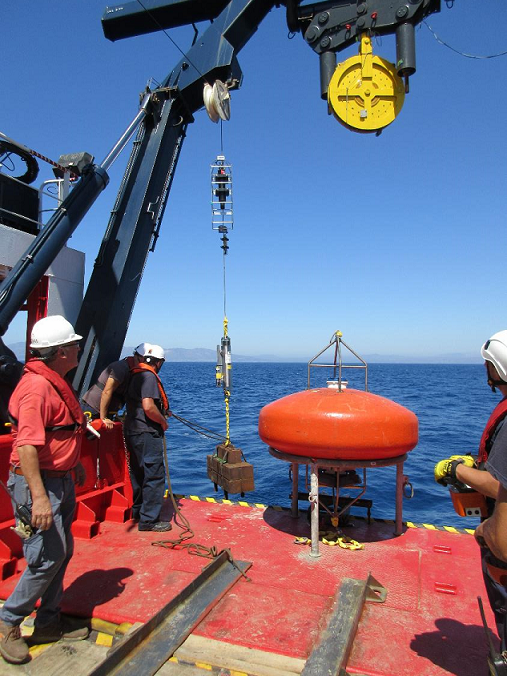Successful field trial of a scaled seabed mining vehicle on board RV Sarmiento de Gamboa
Concerns about future access to strategic raw materials for the high-tech industry have spurred countries around the world to investigate possibilities to extract mineral resources from the deep-sea floor as an alternative or supplement to land mining. Whilst the International Seabed Authority by mandate of the United Nations is still working out the details of the regulatory framework for mining in international waters, the maritime industry is already in full swing developing the technology for mineral extraction from the deep ocean. In the EU-funded Blue Nodules project, the Dutch shipbuilder and technology provider Royal IHC, together with partners from industry and academia, is developing a seabed vehicle for collecting metalliferous nodules, with special emphasis on reducing environmental impacts on the marine environment.
The field trial of the scaled test vehicle Apollo II was the crown on several years of work by engineers of IHC, who in 2016 started with its design and construction. After extensive lab testing of the propulsion and collector systems in 2017, all components were assembled into the integrated test vehicle Apollo II, which was first tested dry and wet in the Netherlands and then subjected to a first field trial offshore Málaga in 2018. After a round of technical revisions, Apollo II was deemed ready for its second field trial in the summer of 2019. In a convoy of four trucks with trailer, Apollo II and a whole load of other equipment required for the trial was driven from the Netherlands to Vigo in northwestern Spain, and there loaded onboard the Spanish research vessel Sarmiento de Gamboa. This ship had been chartered from CSIC-UTM for the field trial because of its favourable overall size and deck space, DP navigation, hoisting capacity of cranes and winches, drop keels for mounting client-supplied equipment, and state of the art scientific facilities such as multibeam and multiparameter echosounders, CTD and ship-ADCP.

In the second week at sea, an array of moored sensors was set out on the seabed, including turbidity sensors, current profilers, sediment traps, an in-situ particle sizer and a recorder for underwater sound. The sensors would record the plume of sediment stirred up by Apollo II and underwater noise produced by the vehicle as it was driving in parallel lines at various distances along the array. Given the variable direction of tidal currents in the area, the passage of the vehicle along the array needed to be carefully timed in order to ensure that the sediment plume produced by the vehicle would be carried towards the array and not away from it. To this end, bottom currents were continuously monitored with the ship’s current profiler.
Results of the first week of technical performance tests were very satisfying. Apollo II drove several kilometers of straight and curving trajectory over soft muddy seabed, proving functionality of propulsion, steering, underwater navigation and the hydraulic collector, whilst critical issues which need attention in the further development of the system were brought to light. Technical issues with the track propulsion and hydraulic collector limited the number of environmental tests that could be carried out during the second week. Even so, analysis of the collected sensor data showed out that the plume and sound produced by the vehicle had been clearly recorded, despite notable interference from nearby trawling. Inspection of the trail of Apollo II by ROV yielded video images and high-resolution scanning sonar images of the imprint produced by the tracks and the hydraulic collector in the seabed. Also, boxcore samples of seabed disturbed by the vehicle as well as reference samples from undisturbed seabed could be collected. The trial provided an excellent opportunity to test and improve methods for evaluating environmental performance of gear used for harvesting metalliferous nodules from the seabed.
Greatly contributing to the success of the trial were the excellent technical and scientific facilities of RV Sarmiento de Gamboa and the professionality of its captain and crew, as well as the support provided by personnel of CSIC-UTM both on board and on land.


